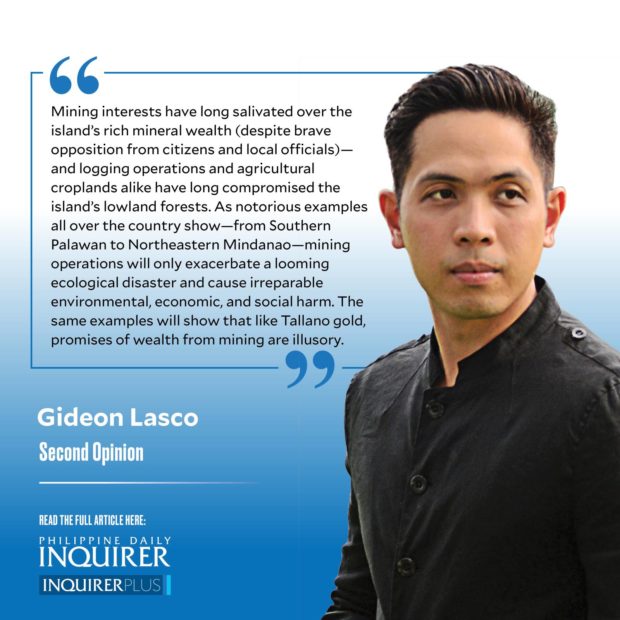Of all the islands in the Philippines I have been to—from Itbayat to Sibutu—Sibuyan Island in Romblon is one of the most memorable, as it is one of the most beautiful.
My first visit to the island—located at the very heart of our archipelago—was in 2008, back when I was a medical student who was obsessed with climbing mountains (I still am), and back when it was the dream of every mountaineer to visit Sibuyan to climb Mount Guiting-Guiting (it still is). Joining a group of mountaineers, I took the 16-hour overnight Ro-Ro from Batangas Pier to Sibuyan via Odiongan. A day after arriving in the town of Magdiwang, we commenced the three-day climb, immersing in a beautiful forest and camping in the shadow of Mayo’s Peak before crossing—with much trepidation and excitement—the famed “knife edge” ridge that led to the summit and earned for the mountain the distinction of being one of the most challenging in the country.
On Feb. 3, 2014—exactly nine years ago—I would return to the mountain we fondly call “G2,” this time to do a traverse from San Fernando to Magdiwang. That time around, I did it as a long dayhike, starting at 2 a.m. and finishing just before sundown; a hike made all the more special as I was guided by the late Tatay Remy Robiso—one of the longtime mountain guides in Guiting-Guiting, and a good friend to mountaineers.
Because of these memories, Mount Guiting-Guiting comes to mind when I think of Sibuyan. But there’s so much more to the island than being a hiking destination. Owing to its distinctive geological history as an island that has been isolated from the rest of the Philippines since its formation, the island possesses incredible biodiversity despite having an area of just 449 square kilometers.
I managed to glimpse some of this diversity during my hikes, from Nepenthes sibuyanensis, the pitcher plant that only grows in the mountain (just one of the over 700 vascular plant species in the island), to the Philippine pygmy woodpecker (one of the estimated 140 bird species). In a recent study (Meneses, et al., 2022), scientists were able to identify 47 species of amphibians and reptiles, further cementing its place as the “Galápagos of Asia”—to say nothing of the marine biodiversity in the surrounding Sibuyan Sea.
This island paradise, however, is under grave threat today with the entrance of Altai Philippines Mining Corp., which, as per reports, is commencing mining exploration activities despite the alleged absence of the necessary barangay, municipal, and environmental (i.e., Department of Environment and Natural Resources) permits.
Keenly aware of their island’s precariousness, Sibuyanons are vigorously opposed to the mining operations, and have bravely set up a human barricade to block and protest the intrusion of mining trucks. Alas, despite its apparent anomalousness, the mining company seems to have the police on their side. As a barangay official was quoted in an Inquirer report as saying: “The police could not even produce a written order, despite claiming that they were ordered to go to the barricades supposedly to maintain peace and order. But, there is no need for them to come as the residents are protesting peacefully. Besides, why were they in full protective gear? They even brought batons, seemingly wanting to provoke some sort of trouble.”
This is not the first time that Sibuyan has faced such an environmental threat; mining interests have long salivated over the island’s rich mineral wealth (despite brave opposition from citizens and local officials)—and logging operations and agricultural croplands alike have long compromised the island’s lowland forests. As notorious examples all over the country show—from Southern Palawan to Northeastern Mindanao—mining operations will only exacerbate a looming ecological disaster and cause irreparable environmental, economic, and social harm. The same examples will show that like Tallano gold, promises of wealth from mining are illusory.
Thus, I am echoing the Sibuyanons’ call for the immediate suspension of mining exploration activities in their island—and an urgent investigation of how such activities started in the first place, without consent or consultation. Surely, a fair and objective impact assessment—social, environmental, medical—will reach the same conclusion that the locals have reached: Sibuyan must be protected from a mining project that will do nothing but harm the island and its people.
—————-
glasco@inquirer.com.ph
